Boost Engagement with Video Personalization Software
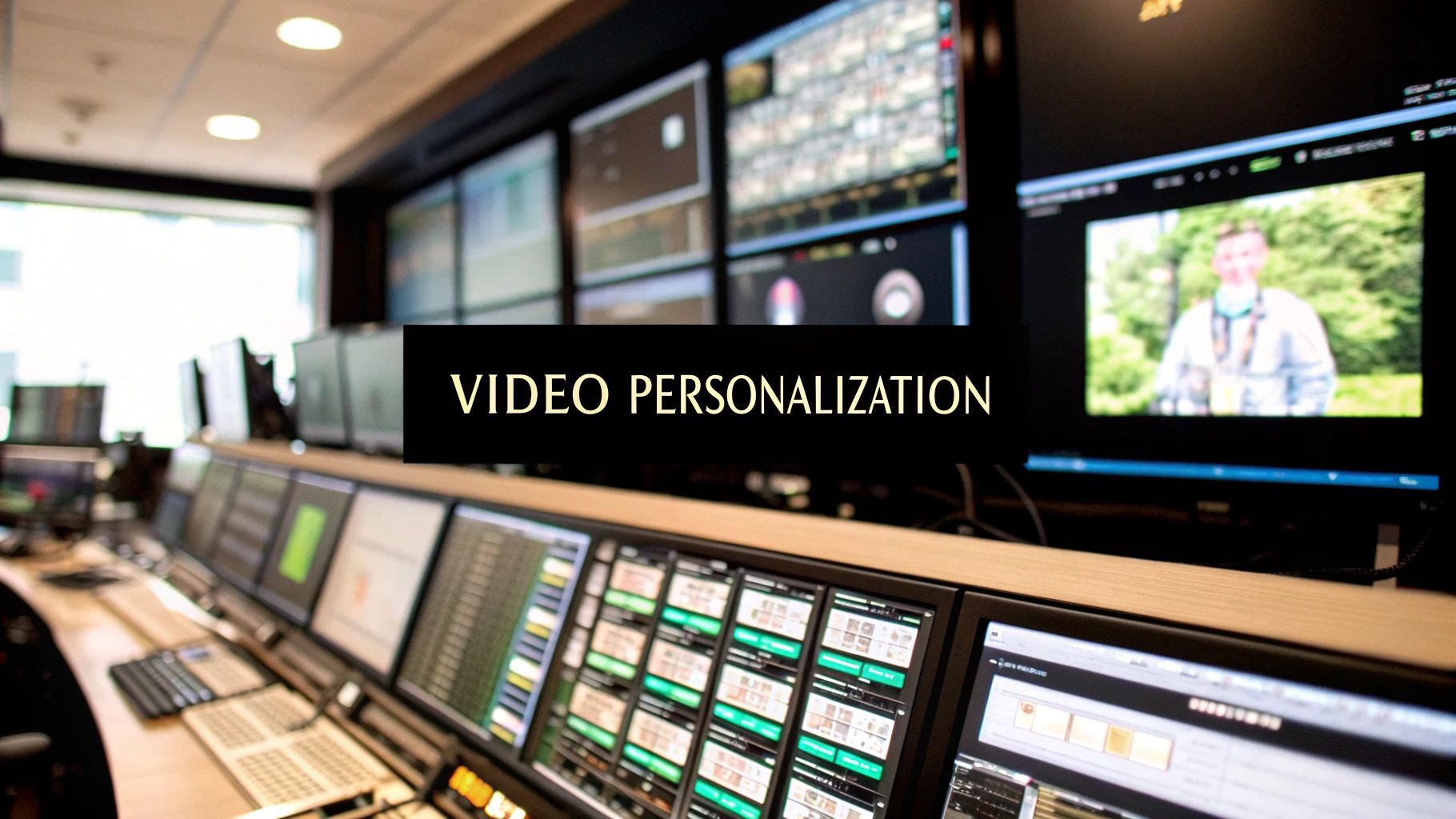
Video Gen Now Faster & Cheaper!


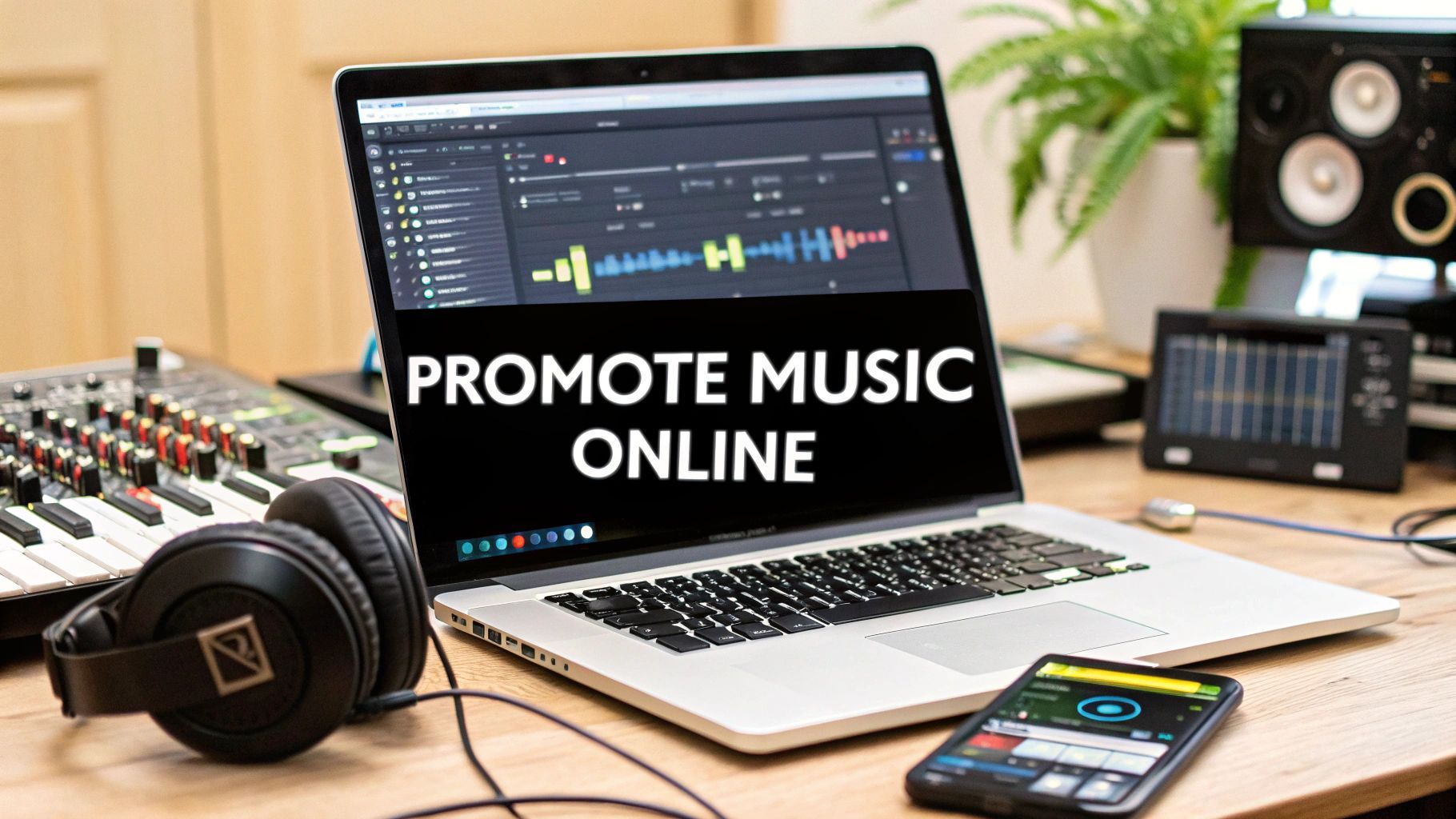
Learn how to promote music online effectively with proven strategies. Discover how to promote music online and grow your audience today!
Look, I get it. You've poured your heart and soul into a new track, and the urge to just scream it from the digital rooftops is overwhelming. But hold on. Before you even think about how to promote your music online, you have to ask yourself a critical question: where will all those new fans go?
Thinking you can just wing it is one of the biggest mistakes I see artists make. It's like inviting everyone to a massive party but forgetting to give them the address. You need to build your digital stage before the show begins.
Before you spend a dime on ads or a single second pitching a playlist curator, you need to get your house in order. This isn't just about slapping up a few profiles. It's about crafting a cohesive, professional online world that tells your story and makes it ridiculously easy for fans, bloggers, and industry folks to connect with you.
This digital stage is your home base. It's the one corner of the internet you truly own, where you control the story and build real relationships. Get this right, and everything else becomes easier.
Think of this as your pre-flight checklist. Having these assets locked down and looking sharp is non-negotiable. A messy, scattered online presence is an instant turn-off for the very people you're trying to impress. This table breaks down the essentials.
Once you've got these core pieces in place, you've built a solid foundation. Now, anyone who discovers you—whether it's a potential superfan or a booker for a festival—sees a professional, organized artist who is ready for the next level.
Okay, so your stage is built. Now it’s time to think about getting people to the show. Distributing your music to streaming platforms is step one, but understanding how people will actually find it is the real game-changer.
Let's not guess. The data tells a pretty clear story about where modern music discovery happens.
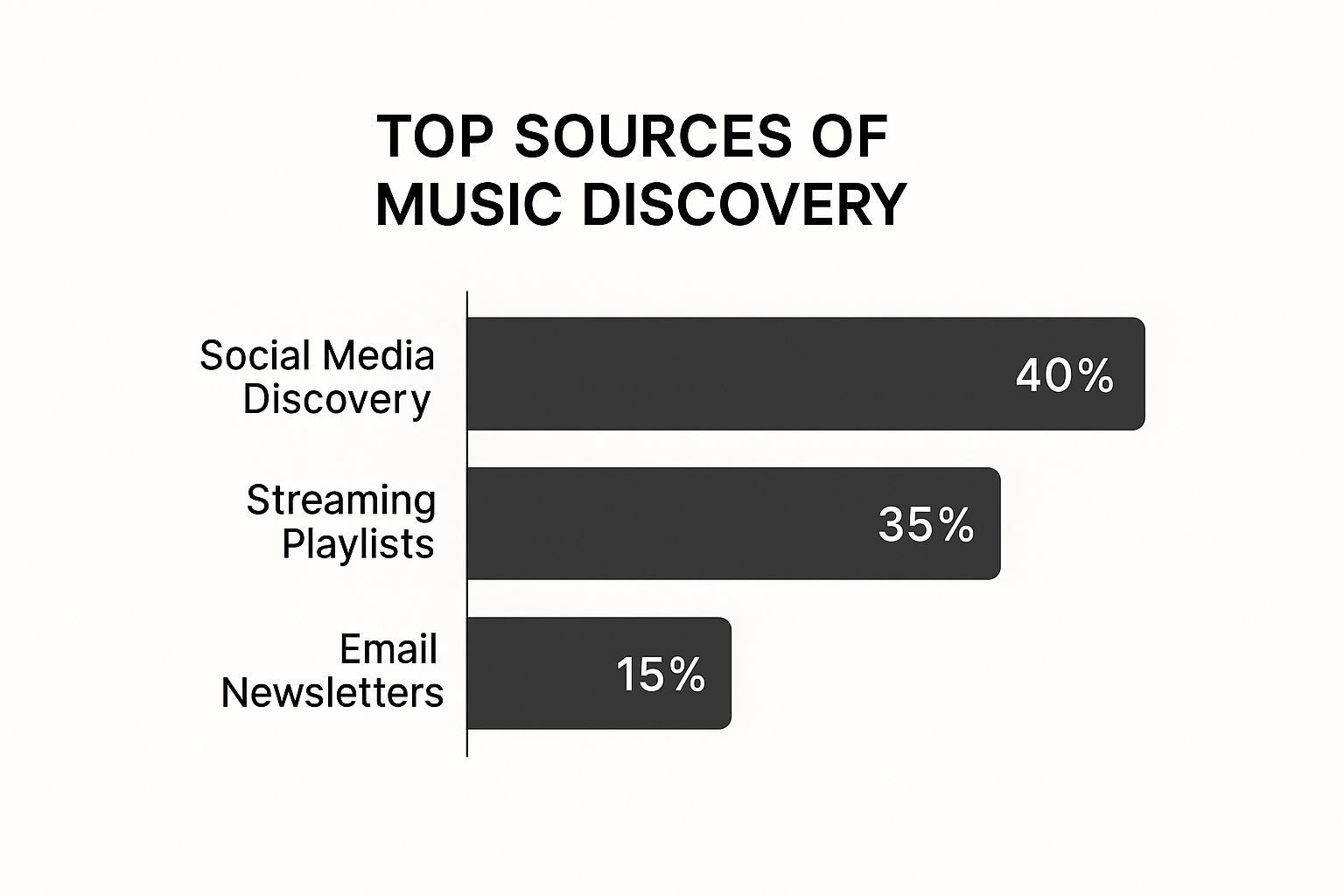
No surprise there, right? Social media and streaming playlists absolutely dominate. This isn't just a trend; it's the new reality of the music industry.
And this reality is being supercharged by explosive growth. The global music streaming market is projected to swell by a staggering $53.49 billion between 2024 and 2029. International markets are growing at a wild 17.3% clip every year, all thanks to more and more people getting smartphones.
This isn't just a bunch of boring numbers. It's a massive, flashing sign that says "OPPORTUNITY." By getting your digital stage in order now, you're positioning yourself to catch a wave of new listeners from every corner of the globe.
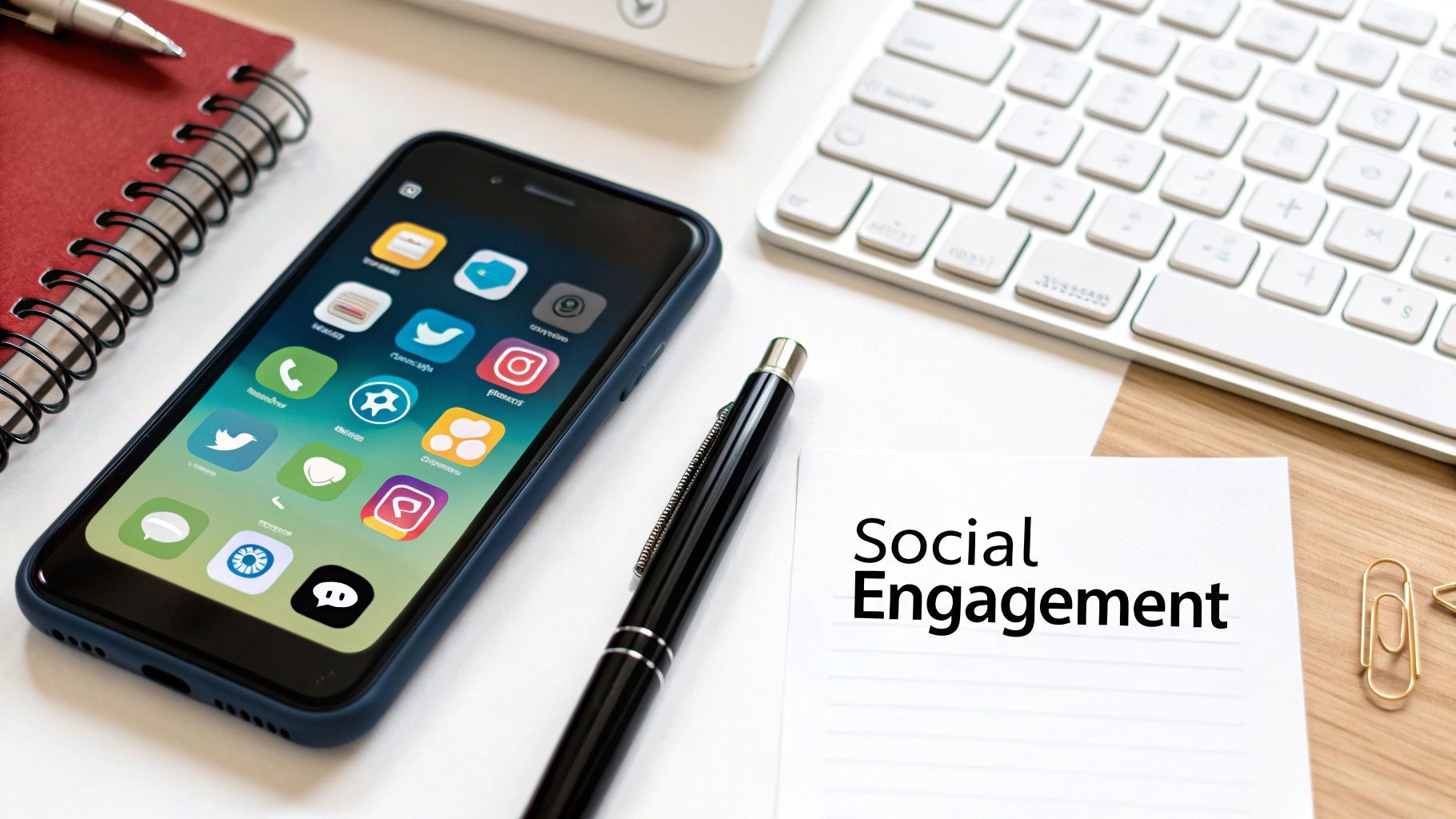
Look at this screenshot of a TikTok 'For You' page. It's organized chaos, and it’s where a 15-second clip of your song can absolutely explode. Getting traction here isn’t about being polished; it’s about being raw, creative, and making friends with the algorithm.
Let’s be real for a second. If your social media strategy is just shouting "NEW MUSIC OUT NOW!" into the digital void, you're doing it wrong. It’s time to stop thinking of social media as a megaphone and start treating it like a backstage pass. This is where you don't just promote your music—you build an army.
The biggest mistake I see artists make is trying to be everywhere at once. That's a one-way ticket to burnout. You need to pick your platforms wisely, based on where your music and your ideal fans actually live.
TikTok: This is the viral laboratory. If you've got catchy hooks and aren't afraid to be a little weird, this is your playground. It’s a goldmine for pop, hip-hop, and anything with a beat that makes you move. Instagram: Think of this as your visual headquarters. Use Reels for those killer performance snippets, Stories for the chaotic behind-the-scenes moments, and your grid to build a stunning, cohesive brand. Discord/Twitch: Ready to connect with your die-hards? These are your spots. This is where you build a real community with exclusive content, live Q&As, and unfiltered conversations.
The best social media promotion never feels like an ad. It feels like an all-access pass to your creative life. Show people the messy, the hilarious, and the unglamorous parts of being a musician. That’s the stuff that builds real connection.
Your feed needs to be more than just a calendar of your release dates. You're telling a story here, giving people a reason to invest in you, the artist, not just the track.
So, think outside the box. Show your fans the absolute struggle of nailing a guitar solo. Post a poll asking them to pick your next single cover. Go live from a messy rehearsal space. The contrast is what makes it compelling—one day, a slick music video clip; the next, a goofy video of you tripping over a mic cable.
This is how you turn a promotional profile into a can’t-miss story. If you want to get into the nitty-gritty of what works where, our guide on https://sendfame.com/blog/social-media-marketing-musicians has a ton of specific tactics.
Organic reach can feel like a slog. But here's the good news: you don't need a huge budget to make a splash with paid ads. Seriously, even $5 a day can connect you with your next thousand fans if you're smart about it.
Start by putting a little money behind the content that's already winning. That Reel that got a surprising number of shares? That TikTok that hit a nerve? Boost it.
Then, get laser-focused with your targeting. If you make dreamy indie pop, don’t just target "pop music" fans. Target people who already listen to artists like Clairo or beabadoobee. The goal isn't just to get clicks; it's to find the right people who are primed to love what you do. For anyone ready to take the next step, optimizing your Facebook ad campaigns is a crucial skill for getting your music in front of the right ears without burning through your cash. This is how you build a real audience, one true fan at a time.
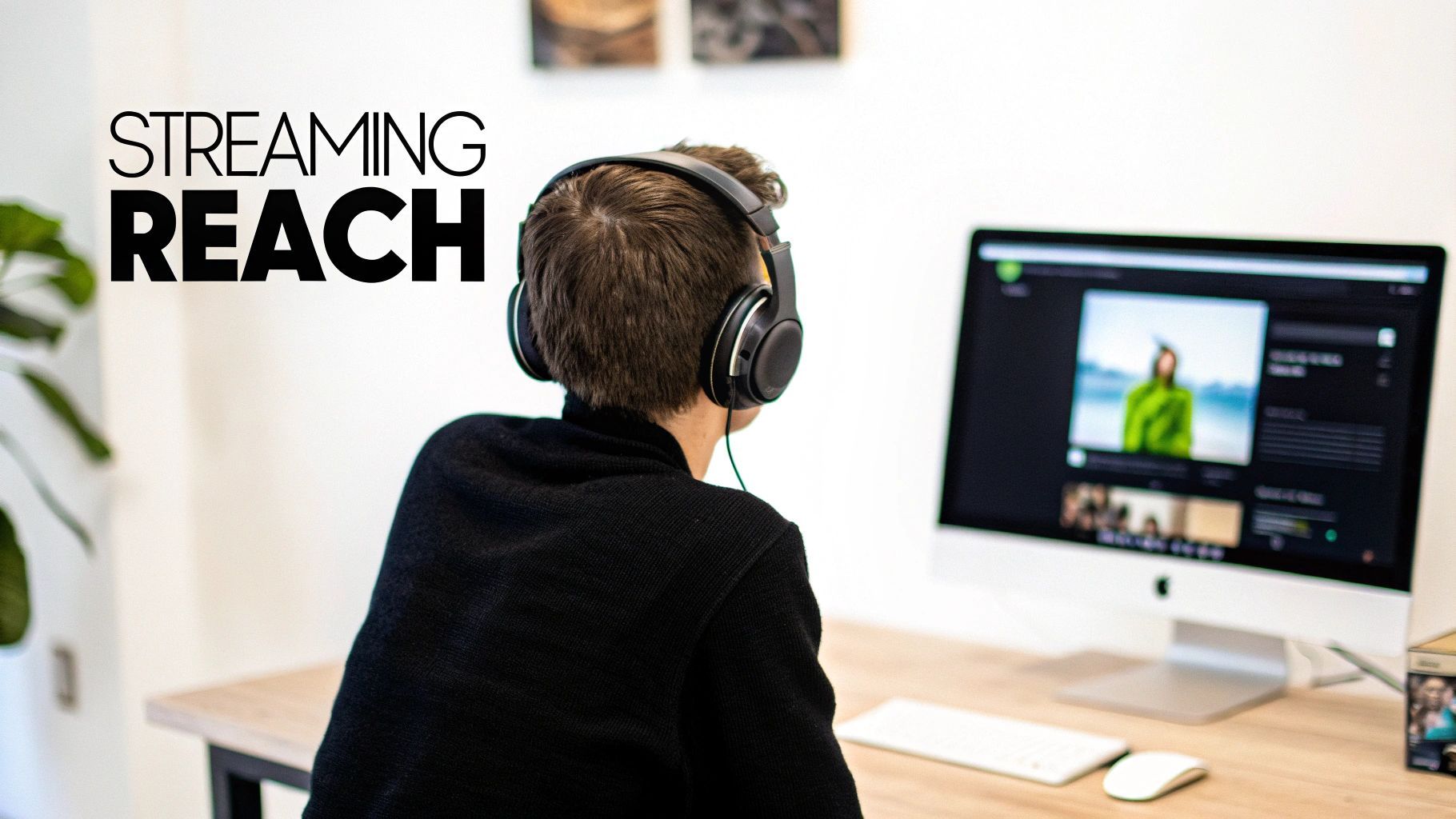
Look, just getting your music onto Spotify and Apple Music is like printing flyers for a show. Sure, it's a critical first step, but it doesn't mean anyone is actually going to show up. The real game isn't just being on these platforms; it's getting people to hit play.
This isn’t about crossing your fingers and hoping for a lucky break. It’s about a smart, calculated strategy to get noticed by both the all-powerful algorithms and the human curators who can change your career overnight.
Before you even think about promotion, you need to claim your artist profiles. This is non-negotiable. Think of it as getting the keys to your very own storefront. You wouldn't let someone else decorate your shop, would you?
Spotify for Artists: This is your command center on Spotify. It unlocks a treasure trove of data, lets you customize your profile with a killer bio and photos, and—most importantly—gives you a direct line to their official playlist pitching tool. Apple Music for Artists: Just like Spotify's version, this portal dives deep into your listener analytics. You can see who's listening, where they live, and what other artists they have on repeat. Gold dust. Amazon Music for Artists: Don't sleep on Amazon! Claiming your profile here opens up another massive audience, including pitching opportunities for their popular playlists and stations.
Claiming these profiles transforms you from a passive name on a list to an active participant in your own success. You simply can't promote your music effectively without the data and tools these backends provide.
Landing a spot on an official Spotify editorial playlist or a big-name Apple Music list can feel like winning the lottery. And while there’s a bit of luck involved, your approach matters—a lot.
Here’s a tip from the trenches: Curators are overwhelmed music lovers, not faceless gatekeepers. Your pitch needs to be a passionate, concise intro from one music fan to another. Ditch the corporate speak and tell them why your song connects.
When you're pitching through Spotify for Artists, give them a heads-up. Submit your track at least one to two weeks before your release day. This gives the editors time to actually listen. And please, fill out every single field on the submission form. The mood, the genre, the story behind the song—all that context helps them find the perfect home for your music.
Let’s be real, streaming has completely reshaped the game. Today, it accounts for a staggering 84% of all music industry revenue, pulling in about $17.5 billion in 2023 alone. With over 600 million subscribers worldwide, these platforms are the battleground for new artists. Getting into the right playlists is your ticket to tapping directly into this massive audience.
While you're shooting for the official lists, don't ignore the vibrant world of independent curators. There are thousands of them out there who have built dedicated followings around hyper-specific niches, from "late-night coding beats" to "underground psych-rock gems."
A placement on one of these can drive thousands of genuine, engaged streams. Find them by digging through Spotify—search for playlists in your genre and check their descriptions for a social handle or an email. When you reach out, keep it personal and brief. Compliment their taste, explain why your track is a perfect fit, and drop a direct link. Building these relationships is a long-term strategy that pays off.
And as you're cooking up your next track, don't be afraid to experiment. If you're looking for a creative spark, check out our guide to the best AI music generators in 2025 to see how new tech can fuel your ideas.
Getting your music featured on the right blog can feel like pure magic. Seriously. One minute you're just another artist shouting into the digital void, and the next, you have that stamp of approval. It’s a third-party endorsement that tells the world, "Hey, you really need to listen to this."
But let's get real for a second. The fastest way to get your music sent straight to the trash folder is by blasting out generic, impersonal emails. To get press that actually moves the needle, you have to think like a sniper, not a machine gunner. This is about running a savvy, DIY press campaign that connects with actual human beings—people who love discovering new music as much as you love making it.
First things first: forget about the huge, household-name publications for a moment. Your big break is way more likely to come from a niche blog that genuinely gets your specific sound. If you’re making atmospheric synth-pop, pitching a heavy metal blog is a massive waste of everyone's time.
Time to put on your detective hat.
Get Smart with Your Searches: Use specific search terms like "[Your Genre] music blog," "[Artists Like You] review," or "submit music [Your Niche]." Follow the Breadcrumbs: Check out which blogs other artists in your circle are sharing on their social media. Where are they getting love? Do Your Homework: This is the most important part. Actually read a few articles on each blog you find. Do they honestly cover music like yours? Do you vibe with their writing style? This research is non-negotiable.
A single passionate writer on a smaller blog who truly believes in your sound is worth more than a hundred indifferent editors at the big-name sites. You're not just looking for a feature; you're looking for a champion.
Okay, so you've got your hit list of dream blogs. Now it's time to write an email that doesn't get instantly deleted. Personalization is everything here. Trust me, blog editors can smell a lazy copy-and-paste job from a mile away.
Your pitch should be short, sweet, and get straight to the point. No fluff.
Start by addressing the writer by their name. Then, mention a specific article of theirs you enjoyed. This isn't about flattery; it's about showing you've actually done your homework. After that, introduce yourself and your music, but frame it in a way that explains why your track is a perfect fit for their specific audience.
Make their job easy by giving them everything they need in one place:
A short, punchy artist bio.A private streaming link to your song (a private SoundCloud link is perfect for this).A link to your EPK with high-res photos and other assets.
To keep all this straight without losing your mind, an organized system is a must. You need to know who you've hit up and when. Many artists have found that using Notion Templates to Supercharge Your PR Outreach helps keep their campaigns on track.
Finally, a week or so later, send one follow-up. And only one. Be polite, not pushy. This whole approach is about turning a cold pitch into a real connection, which can transform a one-time feature into long-term support.
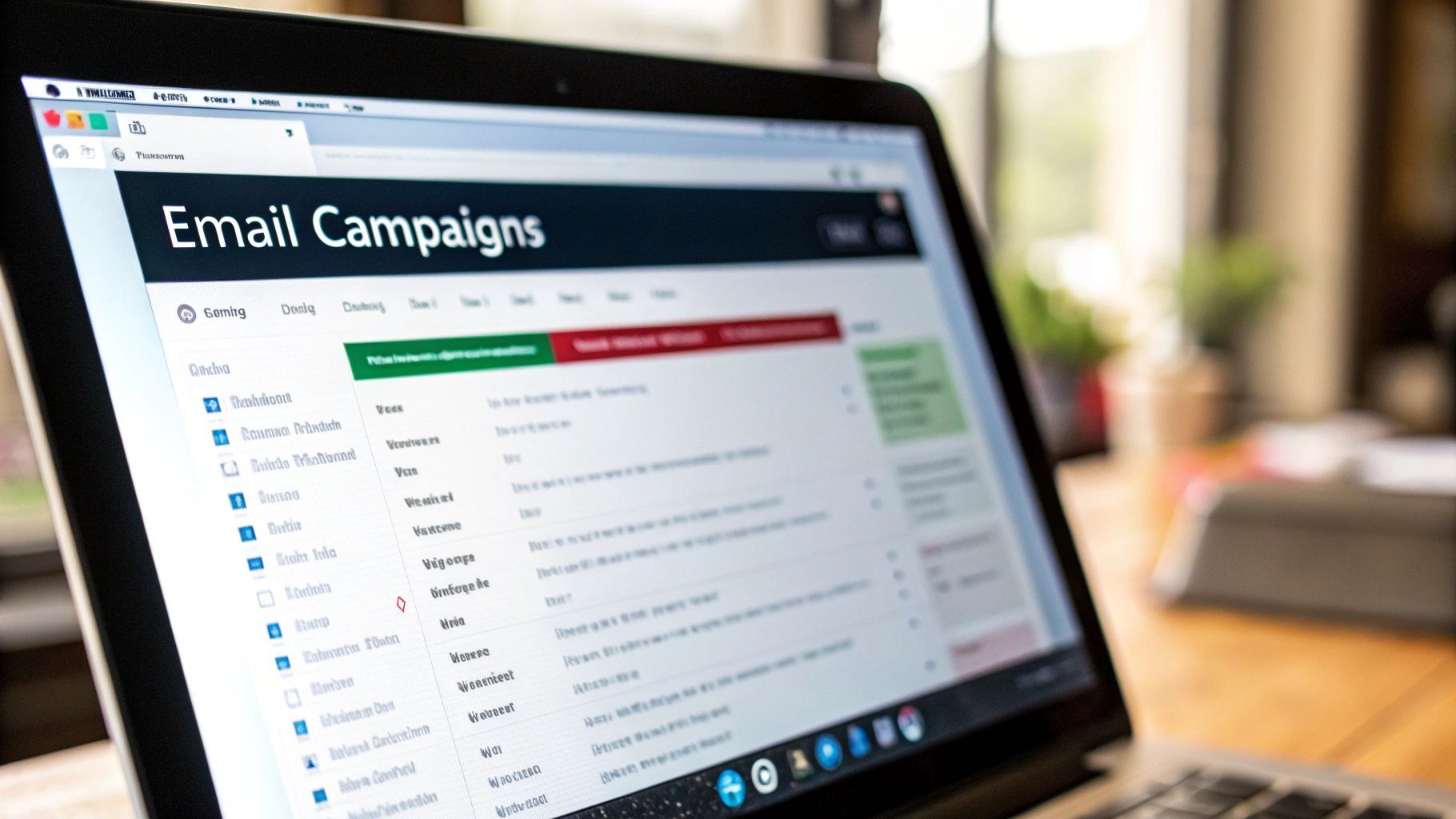
Look, a killer song is fantastic. It's a moment. But a smart, consistent release plan? That’s what builds a career. The single biggest mistake I see artists make is pouring every ounce of energy into one massive push for a single, only to go completely dark for the next six months.
Success in this game is all about momentum. It’s not about one-off miracles.
You need to think of your release cycle as a well-oiled machine. It’s about creating a sustainable schedule and a content plan that keeps your audience totally hooked, especially in the quiet moments between official drops. This is how you stay on their radar and, just as importantly, keep the platform algorithms happy.
Alright, let's talk tactics. There are two big models everyone's using right now, and picking the right one for your project is crucial. They each have their own vibe and demand different kinds of promotional muscle.
The Waterfall Strategy: This is all about dropping a series of singles over a few months. Here’s the trick: each new release bundles the previous ones with it. It’s tailor-made for the streaming era. You’re constantly feeding platforms like Spotify fresh content, which is exactly what you need to land on algorithmic playlists like Release Radar.The Classic EP/Album Drop: This is the old-school approach—building hype for a larger body of work. It lets you create a really immersive world around your project with a super-focused promotional window. The trade-off? It demands a massive burst of content and energy right at launch.
The waterfall approach really taps into how people listen to music now. The pandemic threw gas on the fire, fundamentally changing the game. Global music streaming subscriptions jumped a massive 26.4% between 2020 and 2021, which means 109.5 million new listeners got plugged in and are hungry for a constant stream of new tunes.
And when you consider the average fan streams for 18.4 hours a week, a steady drip of music is what keeps you in their daily rotation.
No matter which release model you go with, you absolutely need a timeline. I’m not just talking about the release date. I’m talking about mapping out every single piece of content that will orbit that release. This is your secret weapon for repurposing assets, saving precious time, and keeping the momentum rolling.
Let’s break down what this could look like for a single song release:
4 Weeks Out: Time to make some noise. Announce the song title and the release date. Start teasing with cryptic lyric snippets or short, muted video clips. Get people curious. 2 Weeks Out: The big reveal! Share your incredible cover art. Post some candid behind-the-scenes photos from the studio session or the video shoot. Release Week: This is it. Go hard. Post daily with direct links to streaming platforms. Share every fan reaction you see. Premiere that music video you worked so hard on. Post-Release: Don't you dare stop now. The work isn't over. Keep the conversation going by sharing playlist adds, press mentions, and cool alternate content like an acoustic version or a fiery remix.
Your promotional content is the story around the song. A grainy photo from the studio, a funny outtake from a video shoot, or a quick story about what inspired a specific lyric—these are the things that make fans feel like they're part of your journey.
When you plan this content out ahead of time, you kill the last-minute panic. Instead, you create a steady drumbeat of excitement that makes every single release feel like a genuine event.
And while you're planning your next project, new tools are popping up that can help you flesh out ideas faster than ever. If you're curious, you might want to check out our guide on how to create music with AI to spark some fresh creative directions. This kind of strategic thinking is what turns a simple song drop into a powerful, career-building engine.
Let's be real, navigating the world of online music promotion can feel like trying to solve a Rubik's Cube in the dark. It throws up a ton of questions. I've heard them all from artists just like you, so I've gathered the most common ones and I'm tackling them head-on with some straight-up, no-fluff answers. Think of this as your personal cheat sheet for those nagging doubts.
Ah, the million-dollar question. Except it shouldn't cost a million dollars. There's no single magic number here. The best way to think about it is like a startup business—you're investing in your own growth, not just throwing cash at a billboard and hoping for the best.
For your first single release, start small. A budget of $50 to $200 is a perfect testing ground. Use it to run some social media ads, play around with different video clips, and see what actually makes people stop scrolling.
Once you see a spark and have some data on what your audience responds to, you can level up. For a bigger project like an EP or album, think about allocating $500+. This is where you can dive into more targeted playlisting campaigns or a proper PR push.
Your first ad spend isn't about going viral. It's about gathering intel. Every single dollar should teach you something valuable about who your fans are and what they want to see from you.
I get this one all the time. The answer isn't "one or the other"—it's both. You just have to use them for different jobs. They're two totally distinct tools in your promo belt.
Think of TikTok as your mad scientist's lab. It's the place for raw, unfiltered creativity. Jump on trends, test out weird hooks, and see what sticks. The algorithm is a discovery machine, built to get your music in front of a massive wave of new people who have never heard of you.
Then, you bring the winners over to Instagram Reels. This is where you nurture the community you're building. Share the more polished, on-brand content with the people who are starting to become genuine fans. Reels are brilliant for turning a casual viewer into a die-hard follower who will actually leave the app to stream your song on Spotify. If you want to get good at this, you have to understand what makes content pop on each platform. Our guide on how to create viral content is a great place to start.
Honestly, it can be a fantastic shortcut, but you have to tread very, very carefully. This space is absolutely crawling with scams that promise the world and deliver fake streams from bot farms. That's a one-way ticket to getting your music yanked from streaming platforms for good.
A legitimate, reputable service, on the other hand, can be a game-changer by connecting you with real human curators who might actually love your sound. Before you even think about paying anyone, you need to do your homework like a detective.
Demand Transparency: Do they tell you exactly which playlists they're pitching to? Or is it all smoke and mirrors? Ask for Proof: Can they show you case studies or point to real artists they've successfully helped? Check Their Claims: A huge red flag is promising placement on official editorial playlists (like Spotify's RapCaviar). No third-party service can guarantee that. You want someone who targets legitimate, genre-specific, user-curated playlists.
At the end of the day, a good pitching service is an amplifier, not a miracle worker. It helps great music find an audience, but it can't fix a bad song.
Ready to create stunning visuals for your next release? With SendFame, you can generate custom album art, music videos, and social media content in just a few clicks. Stop spending hours on design and start creating with the power of AI at https://sendfame.com.
Create Epic
SendFame